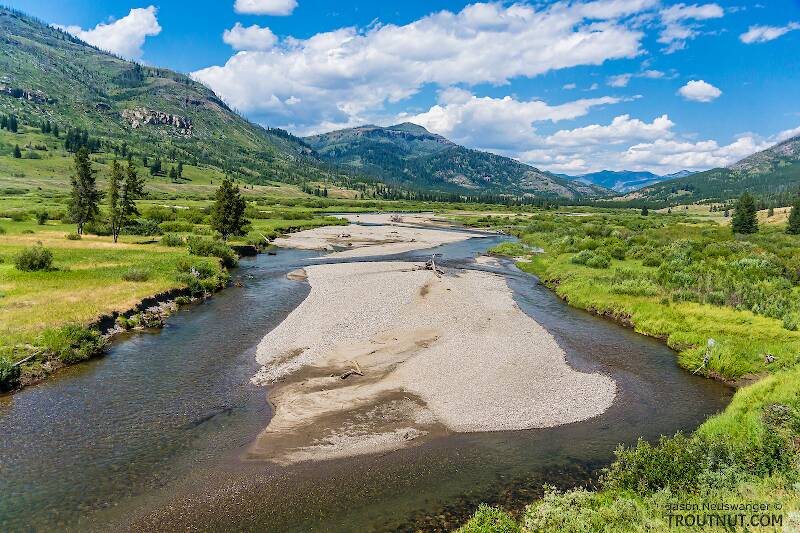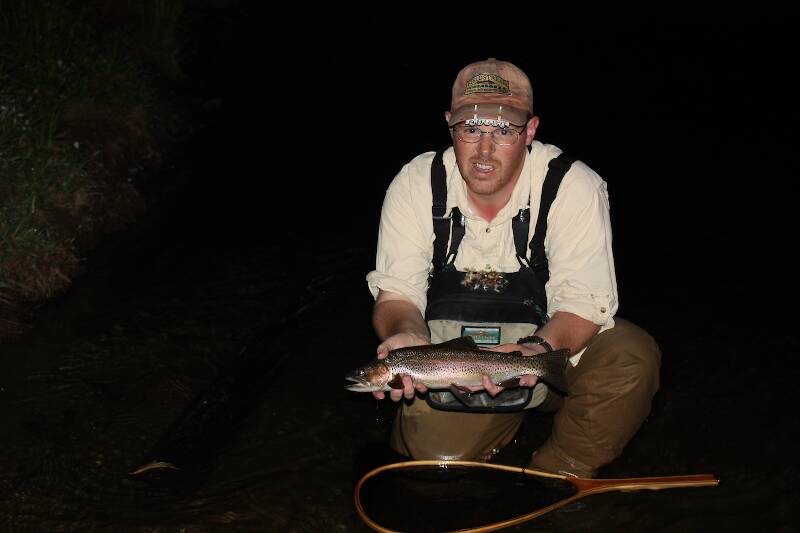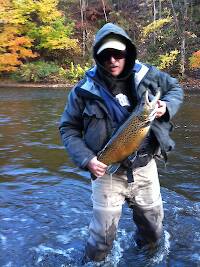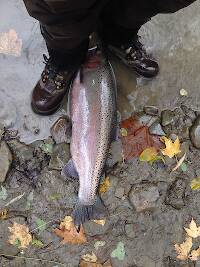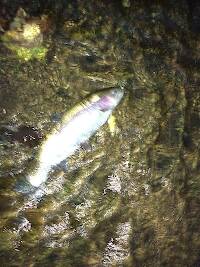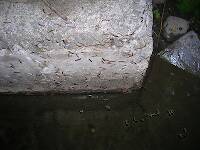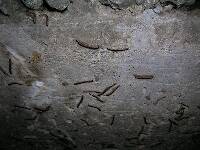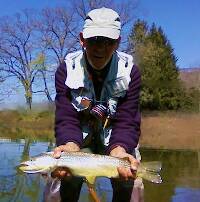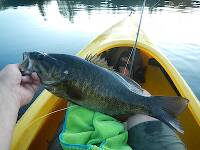
Blue-winged Olives
Baetis
Tiny Baetis mayflies are perhaps the most commonly encountered and imitated by anglers on all American trout streams due to their great abundance, widespread distribution, and trout-friendly emergence habits.
Featured on the forum

This is a striking caddis larva with an interesting color pattern on the head. Here are some characteristics I was able to see under the microscope, but could not easily expose for a picture:
- The prosternal horn is present.
- The mandible is clearly toothed, not formed into a uniform scraper blade.
- The seems to be only 2 major setae on the ventral edge of the hind femur.
- Chloride epithelia seem to be absent from the dorsal side of any abdominal segments.
Based on these characteristics and the ones more easily visible from the pictures, this seems to be Grammotaulius. The key's description of the case is spot-on: "Case cylindrical, made of longitudinally arranged sedge or similar leaves," as is the description of the markings on the head, "Dorsum of head light brownish yellow with numerous discrete, small, dark spots." The spot pattern on the head is a very good match to figure 19.312 of Merritt R.W., Cummins, K.W., and Berg, M.B. (2019). The species ID is based on Grammotaulius betteni being the only species of this genus known in Washington state.
- The prosternal horn is present.
- The mandible is clearly toothed, not formed into a uniform scraper blade.
- The seems to be only 2 major setae on the ventral edge of the hind femur.
- Chloride epithelia seem to be absent from the dorsal side of any abdominal segments.
Based on these characteristics and the ones more easily visible from the pictures, this seems to be Grammotaulius. The key's description of the case is spot-on: "Case cylindrical, made of longitudinally arranged sedge or similar leaves," as is the description of the markings on the head, "Dorsum of head light brownish yellow with numerous discrete, small, dark spots." The spot pattern on the head is a very good match to figure 19.312 of Merritt R.W., Cummins, K.W., and Berg, M.B. (2019). The species ID is based on Grammotaulius betteni being the only species of this genus known in Washington state.

Troutnut is a project started in 2003 by salmonid ecologist Jason "Troutnut" Neuswanger to help anglers and
fly tyers unabashedly embrace the entomological side of the sport. Learn more about Troutnut or
support the project for an enhanced experience here.
Martinlf on Apr 25, 2014April 25th, 2014, 9:56 pm EDT
Does anyone have a solution for that fish that is taking caddis after they bounce a time or two? I've tied some bivisible style flies (with all Cree hackle) and put sparse CDC wings on them to try out, but wonder if anyone else has already solved this one. The fish in mind is ignoring dead drifts and flies "twitched": it wants the fly to actually bounce a time or two above the surface, then it pounces on the caddis. You probably know the drill.
"He spread them a yard and a half. 'And every one that got away is this big.'"
--Fred Chappell
--Fred Chappell
Taxon on Apr 26, 2014April 26th, 2014, 10:34 am EDT
Hi Louis-
Have you considered dapping? I believe that would be the most effective way to imitate the bouncing behavior of an egg-laying caddis.
Have you considered dapping? I believe that would be the most effective way to imitate the bouncing behavior of an egg-laying caddis.
Martinlf on Apr 26, 2014April 26th, 2014, 4:28 pm EDT
Roger, I hadn't. Thanks. It may be difficult to get close enough to make this work, but it's worth a try. It did work for me a few weeks ago on a fish feeding on olives in an eddy whose currents defeated all other attempts.
"He spread them a yard and a half. 'And every one that got away is this big.'"
--Fred Chappell
--Fred Chappell
JOHNW on Apr 26, 2014April 26th, 2014, 6:30 pm EDT
Tenkara or as my redneck friends call them Crappie Poles (that 10' monstrosity of yours might do the trick.
"old habits are hard to kill once you have gray in your beard" -Old Red Barn
PaulRoberts on Apr 29, 2014April 29th, 2014, 7:22 pm EDT
Lafontaine's "Dancing Caddis", fished on a 20ft Tenkara-style pole? Or maybe a hand-line lowered down from a bridge? Can't win em all I guess. But keep at it. :)
Reminds me of how we kids would tear the white tags from our shirt collars and dap them on hand-lines from the concrete walls lining the Barge Canal for rock bass and smallmouth during the drake emergences there. We would dance and vibrate the "fly" on the surface making a pretty lively and realistic presentation.
Reminds me of how we kids would tear the white tags from our shirt collars and dap them on hand-lines from the concrete walls lining the Barge Canal for rock bass and smallmouth during the drake emergences there. We would dance and vibrate the "fly" on the surface making a pretty lively and realistic presentation.
Quick Reply
Related Discussions
Topic
Replies
Last Reply
2
Nov 4, 2012
by Aszat
by Aszat
6
Nov 18, 2011
by Wiflyfisher
by Wiflyfisher
5
Jul 23, 2017
by Jmd123
by Jmd123

